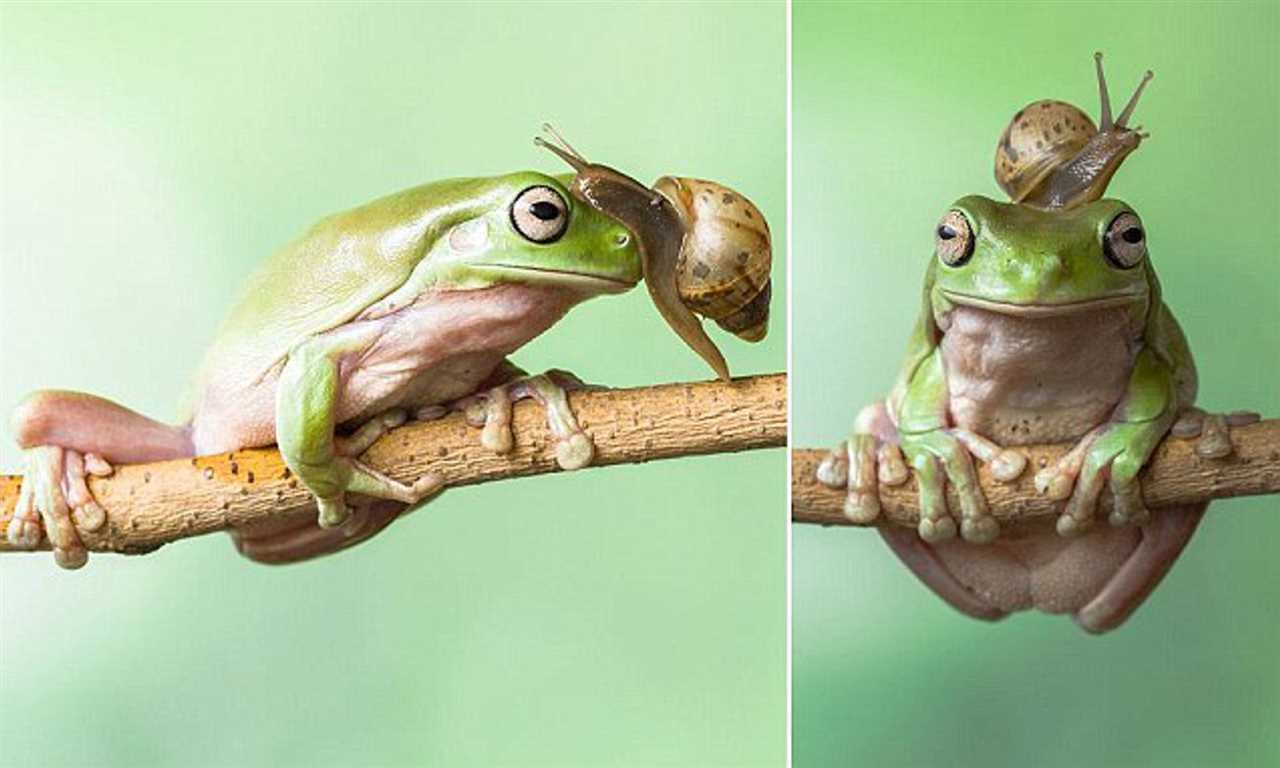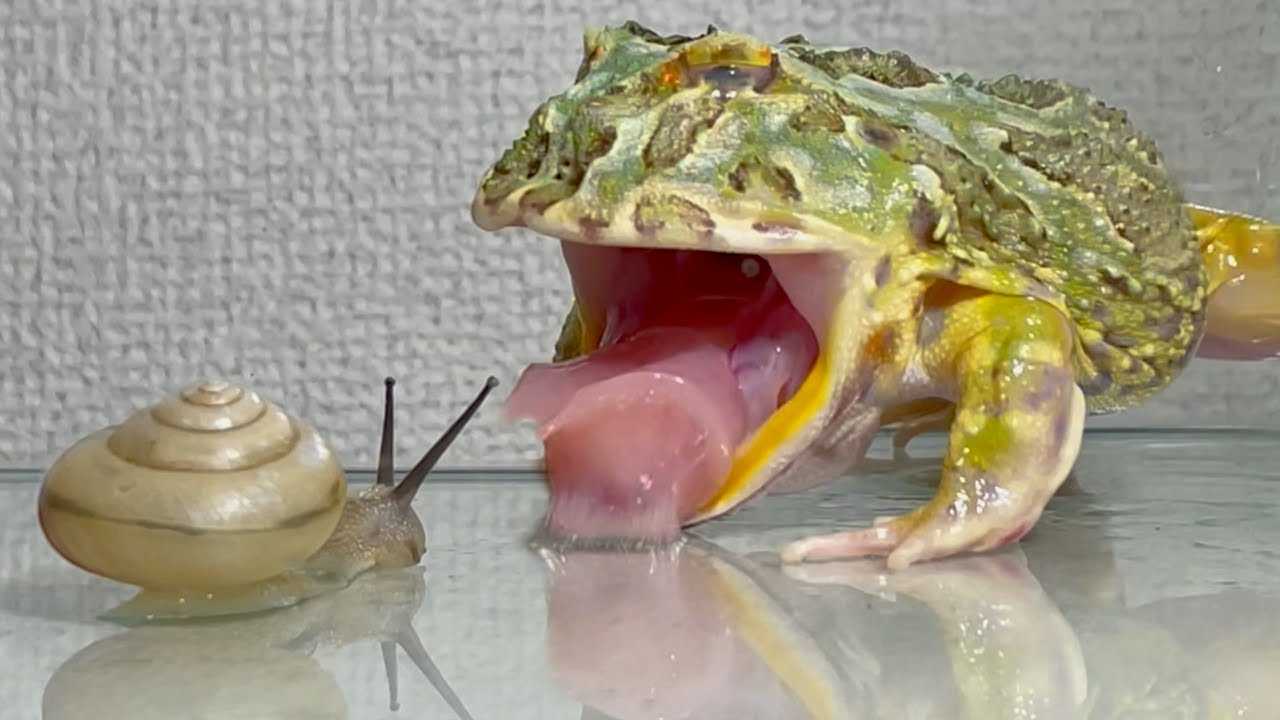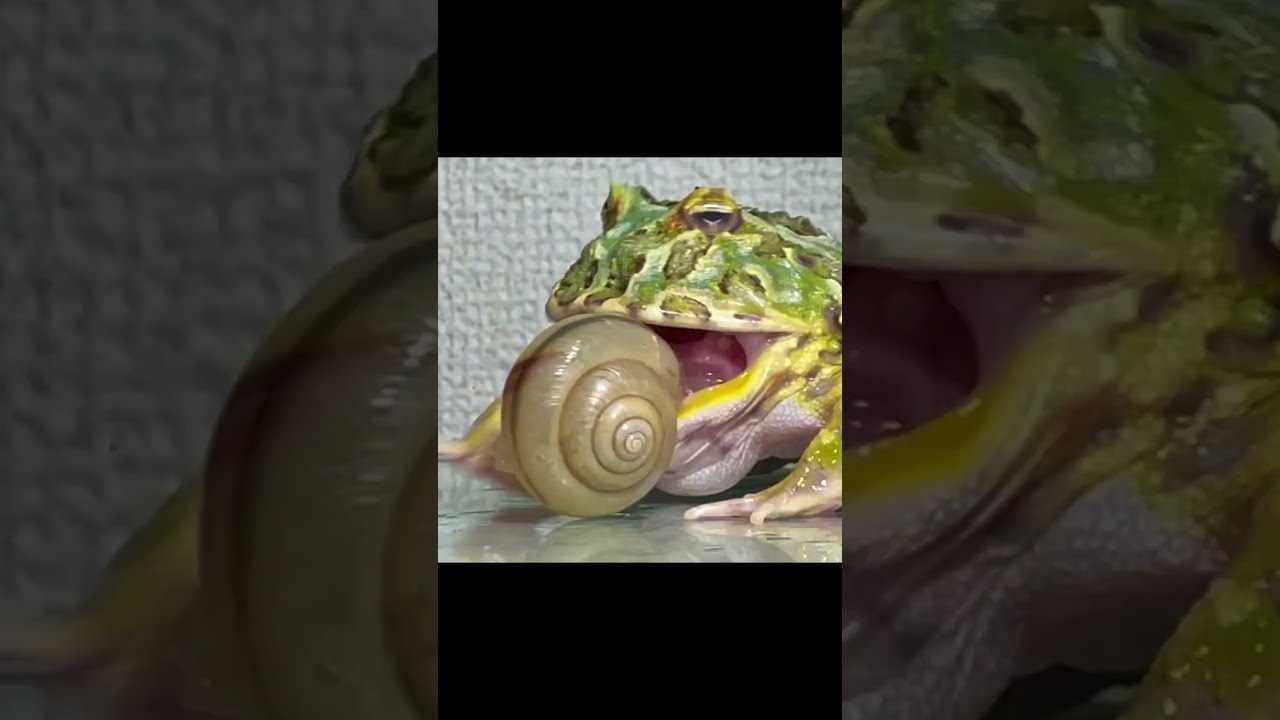Frogs, being amphibians, have a diverse diet that includes a variety of small creatures. One of their favorite meals are snails. These slimy creatures offer a tasty and nutritious meal for frogs, providing them with important vitamins and minerals.
Snails are a great source of protein for frogs, which is essential for their growth and development. The high protein content in snails helps frogs build strong muscles and maintain their overall health. In addition, snails are rich in calcium, which is necessary for the frogs’ bone development and maintenance.
Frogs also have a keen sense of sight and hearing, which helps them locate snails in their natural habitats. They are often found near water bodies, such as ponds or swamps, where snails are abundant. Frogs rely on their senses to detect the vibrations and movements made by snails, allowing them to quickly spot and catch their next meal.
Natural Diet of Frogs
Snails are also an important part of a frog’s natural diet. Frogs enjoy snails due to their high protein content and availability. Snails provide a good source of nutrition for frogs and are often sought after as a food source. The hard shell of the snail can be easily broken by the strong jaws of the frog, allowing them to consume the soft interior.
It is interesting to note that the natural diet of frogs may vary depending on their habitat and species. Some frogs are arboreal and rely more on a diet of small insects and other invertebrates found in trees and plants, while others are semi-aquatic and prefer a diet rich in aquatic creatures like fish and tadpoles.
Feeding Habits of Frogs
Frogs are fascinating creatures known for their unique feeding habits. Their diet can vary depending on the species and their environment, but in general, frogs are carnivorous and feed on a wide variety of insects, spiders, worms, and small vertebrates.
One of the main reasons frogs are such successful hunters is their ability to catch prey with their long, sticky tongues. When a frog spots its prey, it quickly extends its tongue and snatches it up, pulling it back into its mouth in a matter of milliseconds.
Frogs are opportunistic feeders, meaning they will eat anything that fits in their mouth and moves. Some larger species of frogs, such as bullfrogs and leopard frogs, can even consume small birds and rodents. However, most frogs prefer to feed on smaller prey like insects and worms.
It is interesting to note that frogs do not chew their food. Instead, they use their powerful jaws to clamp down on their prey and swallow it whole. Their stomachs contain strong acids and enzymes that help break down the food and extract nutrients.
In addition to their hunting skills, frogs are also known to employ some interesting feeding strategies. Some species, like the African bullfrog, use their vocal sacs to lure prey closer before striking. They produce deep, resonant calls that mimic the vibrations made by insects, attracting them and making them an easy target.
Furthermore, frogs also rely on their keen eyesight and ability to detect movement in order to locate prey. They are excellent at spotting tiny insects flying or crawling nearby, even in low-light conditions. Some species even have specialized adaptations, such as bulging eyes or horizontal pupils, which enhance their ability to locate prey.
Benefits of Including Snails in Frogs’ Diet
Including snails in frogs’ diet can provide several benefits for the frogs’ health and well-being. Here are some reasons why frogs should eat snails:
1. Nutritional Value
Snails are rich in protein, which is essential for the growth and development of frogs. Protein helps in building and repairing tissues, producing enzymes, and maintaining a healthy immune system. By including snails in their diet, frogs can meet their nutritional requirements and thrive.
2. Calcium Source
Snails are an excellent source of calcium, which is a vital mineral for frogs. Calcium is essential for maintaining strong bones, healthy muscle function, and proper nerve transmission. Including snails in their diet helps ensure that frogs receive an adequate amount of calcium to support their skeletal system.
3. Enriching Diet Variety
Feeding frogs a varied diet is crucial to their overall health. By including snails in their diet, frogs can enjoy a diverse range of food sources. This not only provides essential nutrients but also stimulates their natural foraging behavior and keeps them mentally stimulated.
4. Natural Prey

Snails are one of the natural prey for frogs in the wild. By offering snails as part of their diet, it allows frogs to exhibit natural feeding behaviors and maintain their instinctual hunting skills. This can help keep the frogs active and engaged, mimicking their natural environment.
5. Preventing Overpopulation
Tips for Feeding Frogs
Feeding frogs can be a rewarding and enjoyable experience. To ensure that your frogs stay healthy and thrive, here are some important tips to keep in mind:
1. Know What Frogs Eat

2. Choose the Right Snails

3. Feed a Balanced Diet
4. Feed Appropriately Sized Food

When feeding your frogs, make sure to offer appropriately sized food. If the prey is too large, it can be difficult for the frog to swallow and digest, leading to potential health issues. On the other hand, if the food is too small, it may not provide sufficient nutrition. Choose food items that are about the same size or slightly smaller than the frog’s mouth.
5. Feed in a Separate Container
To avoid contamination and to monitor your frogs’ feeding habits, it’s recommended to feed them in a separate container. This will allow you to easily remove any uneaten food and prevent it from spoiling the water in the frog’s habitat. Use a shallow dish or container that is easy to clean.
6. Observe Feeding Behavior
While feeding your frogs, take the time to observe their behavior. Frogs are opportunistic feeders, and their appetite may vary depending on factors such as temperature and season. By monitoring their eating habits, you can ensure that they are receiving enough food and adjust their diet accordingly.
Remember, providing a varied and nutritious diet is essential for the overall health and well-being of your frogs. By following these tips, you can create a suitable feeding routine that will keep your frogs happy and thriving.

I’m Lena Adams—a product of an unconventional upbringing in the African wilderness. My father, a daring explorer of African wildlife, sparked my fascination with reptiles, a passion that intertwined with the tragic loss of my mother during an expedition, leaving an indelible mark on my life. Driven to understand the creatures that captivated my parents, I embarked on my journey, sharing insights about reptiles, frogs, and lizards on my website. Through my explorations and conservation efforts, I honour my family’s legacy while seeking connections—to the creatures, nature, and the mother whose presence I yearn to understand.
